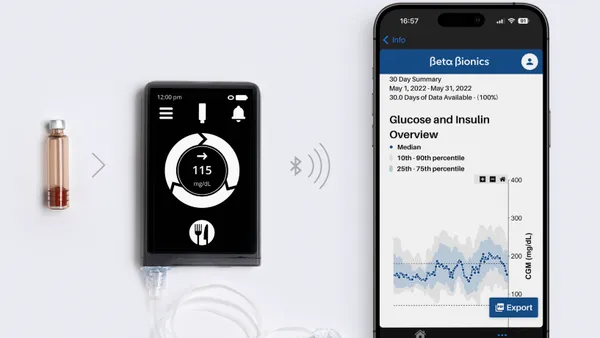More clinical trial sponsors and CROs are beginning to adopt decentralized solutions and embrace digital workflows, yet informed consent continues to rely heavily on paper-based processes. Lots and lots of paper.
In fact, a recent study that found that the average 1,500-bed hospital prints over eight million pages per month at the cost of four cents per page. That adds up to nearly $3.8 million in paper each year. And while a majority of healthcare organizations are digitizing their processes with eClinical solutions, 76% still admit to printing consent forms.
Consent is a critical part of the patient journey, but ensuring patients are fully informed and willing to participate in a trial is an ongoing process.
Study and site managers must confirm that patients receive all of the necessary information to make a free and informed choice before consenting to participate in a study - and continuously throughout the trial. Only then can clinicians fulfill the legal and ethical responsibility of their research while bringing important IPs to market.
We will explore the role consent plays in the success of your trials and how the industry is shifting towards greater adoption of electronic consent (eConsent) to strengthen patient comprehension, adherence and retention.
What is informed consent?
Informed consent refers to the explicit permission granted by a patient after fully comprehending all possible risks and benefits of their involvement in clinical research.
Consent cannot be considered informed unless the consenting individual understands:
- All possible health risks involved in their participation
- Any potential benefits as a result of their involvement
- Comprehension of all procedures required of them
- Time, travel, monetary and personal commitments required during the course of the study
- The extent to which their personal health information (PHI) will be collected and maintained
- The voluntary nature of their participation and that they may discontinue participation at any time
Why informed consent matters
For consent to be considered 'informed', the patient must receive all of the information they need to make an educated decision on their involvement with the study. That means the information provided to patients must be complete, relevant and—most importantly—easy to comprehend.
In traditional research, the informed consent form (ICF) and patient collection forms are excessively long and littered with confusing medical jargon. As a result, nearly 30% of patients are unaware of basic aspects of their involvement, such as randomization assignment, the possibility that they could receive a placebo, or the fact that an adverse effect (AE) could occur. Even worse, 35% of patients who dropped out of trials cited the consent form as confusing.
Informed consent is increasingly more complex
If an informed consent form fails to educate a patient on critical components, it is not serving its most basic function. But evaluating a patient's comprehension can be difficult.
Clinicians have both a legal and ethical responsibility to discuss the risks and benefits of clinical research with their patients. Yet, on average, healthcare professionals spend as little as six minutes training patients on the use of medication. Confusion around processes, protocols and expectations continues to be a leading reason why patients drop out of trials and failure to obtain consent is one of the top 10 reasons why medical malpractice claims are filed.
Experts continue to find that when clinical research depends on a combination of paper consent forms and unstructured conversations with healthcare workers, few participants walk away feeling informed or being able to recall and comprehend what was shared with them.
There is also evidence that as consent forms grow longer, they become harder to comprehend and result in higher patient drop-out rates.
Streamlining consent forms electronically - also known as eConsent - can not only help improve enrollment and retention issues, it can help establish better trial continuity due to higher comprehension and lower drop-out rates.
A 2019 study examining patient perceptions aimed to look at how eConsent impacted overall patient comprehension. A majority of eConsent patients (94%) found the forms to be easily digestible. This was especially true for patients 34 years or under.
Building consent into your patient journey
eConsent is more than a conversion of paper consent forms to an electronic version. eConsent can be the bridge that improves participant engagement in clinical trials through a variety of patient-centric workflows.
eConsent solutions are helping clinical teams build consent workflows organically into their patient journey. Here are ways that teams can approach building consent into their patient journey from the ground up:
- Use onboarding as a time to clearly, concisely and directly explain the patient's expectations, answer any questions they have, and introduce them to new processes or decentralized technologies.
- Offer extended discussions with patients to address fears and anxieties they're facing.
- Throughout the trial, build processes to check in with patients at regular intervals and offer a space for questions, explicitly enquire about any issues and make them aware of additional support.
- Don't make consent difficult for non-medical personnel to digest. Use plain language and avoid heavy medical jargon so patients can understand what is being asked of them.
- Offer translation in local languages (and ensure the translated information is still easily digestible).
- Don't assume lack of questions means patients understand the consent forms. Actively check on their comprehension throughout the consent process.
- Enrich eConsent forms with media such as video and audio that are more friendly ways of communicating with a lower health literacy population.
- Consider advanced digital features like quizzes or gamification that participants can interact with without sacrificing compliance.
- Provide supplemental information to the consent form that patients can review for additional information. This could be in the form of educational videos or informational pamphlets.
The future of informed consent begins with you
Digital transformation has radically changed how clinical trials operate in a post-COVID world. Bring your consent process into the digital age and see the benefits it can have on your patients, your sites, and your trials as a whole.
References
[1] Hesitant to embrace decentralized trials due to regulations
[2] Informed Consent: Letting Go of the Status Quo
Patient preference and adherence, 10, 631–640. https://doi.org/10.2147/PPA.S104259
[4] 2019 Perceptions and Insights Study
[5] Improving Health Literacy in Clinical Trials
[6] Failure to Start, Filling the Cracks COVID Exposed in Patients Onboarding Support Webinar
[7] The Impact of Informed Consent Part 1: Compliance
[8] How Can We Improve the Patient Experience in Clinical Trials?
[10] How to Strengthen Trial Retention Through Patient Education
[11] Use of Electronic Informed Consent: Questions and Answers










